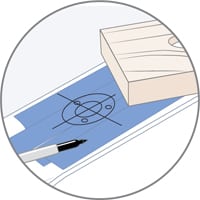
Mask the area with a good painters tape to reduce chipping and protect the surrounding gelcoat, and then mark the center of the rodholder position. Your rod holder came with a drilling template to make this job easy. The hole will look more or less elliptical, depending on the angle of the rod holder.
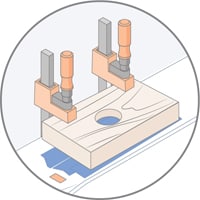
Make the simple jig shown in sidebar at right with a one-inch scrap of wood wide enough to clamp in place over the gunwale. This will guide the hole saw to establish the proper angle of the cut. If you want to go hardcore, follow Kevin Falvey’s online tips for a professional hole saw jig assuring an über-accurate cut and secure fit.
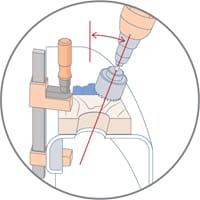
With the jig clamped over the template, guide the hole saw into the jig. Begin slowly, apply pressure carefully, and the hole saw will cut without binding. Drop the rod holder in place, align it, and check and mark screw holes. Remove the holder and drill the screw holes with the quarter-inch bit.
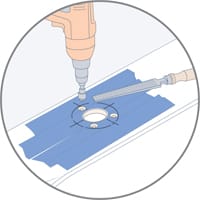
Countersink the screw holes slightly so they won’t crack. File or sandpaper the center hole’s edge too. Remove the tape. If the coring is wood, seal it with epoxy resin using a paintbrush. Seal nonwood coring with 3M 4200 or other polyurethane-based sealant. Allow it to cure.
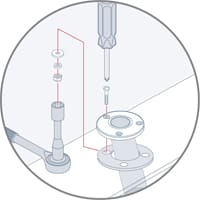
Apply a bead of 3M 4200 sealant to the rod-holder flange and the screw holes. Put the rod holder in place; install the screws, backing plate, washers and locknuts, and tighten. Use a damp-gloved finger to remove any excess sealant and allow it to cure. You’re done!
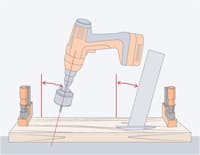
For the jig, you’ll need to replace the standard hole-saw guide bit with a longer one — say 12 inches. Invert the rod holder next to the location, match the drill to the angle, and drill. Check the hole angle by slipping the rod holder through it. Make sure the fit is snug and the flange fits flush with the jig surface. The other angle to consider is the one that determines the orientation of the rod when in the holder. For instance, a 30- degree rod holder often won’t fit inside the gunwale if oriented at 90 degrees to the boat. You may have to rotate the holder or use a 15-degree holder instead.
If you use your boat for fishing — and stats show 80 percent of us do sometimes — it usually doesn’t take long to realize that you never seem to have enough gunwale rod holders. Adding a couple extra “guns” to the armory is a fairly easy weekend project that can be accomplished with basic tools if you are fastidious about measuring and not queasy about cutting holes.
DIY Jig Makes Cutting Rodholder Holes Easier
When choosing flush-mount rod holders, be aware they come in various angles from 0 to 30 degrees. The steeper the angle, the more space is required under the gunwale, so make sure a 15- or 30-degree rod holder will fit the available space. Also, be certain no other gear, rod storage tubes, plumbing, electrical wiring or hydraulics are in the way. You can check out what’s behind the coamings and under the gunwales by opening access plates, removing stereo speakers or even taking out tackle boxes.
Choose open-bottom holders if you’re OK with rainwater draining through them. Some have drain tubes that can be routed to the cockpit if it drains overboard. After that, choose the units that best match other rod holders and hardware on your boat.









